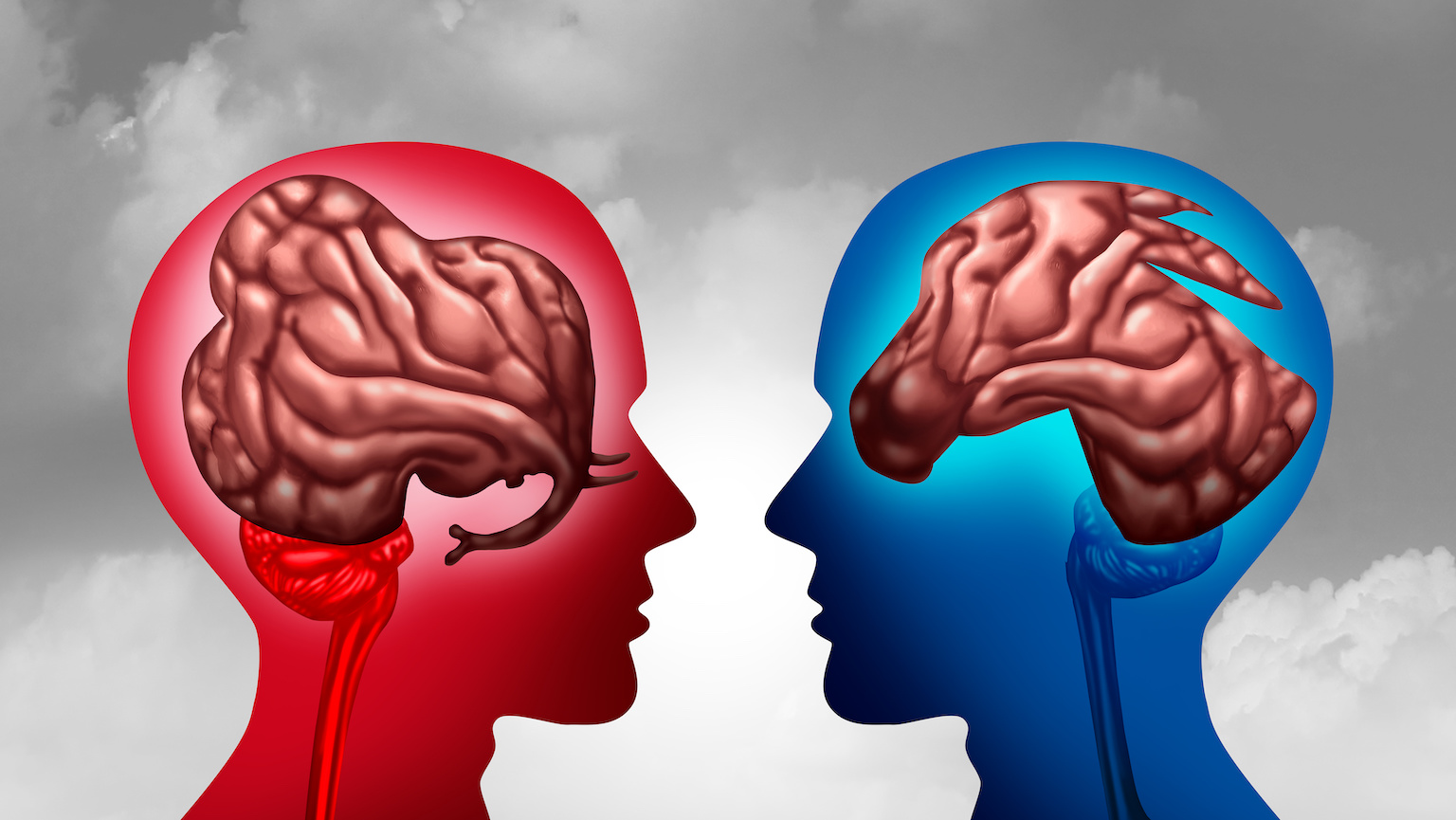Psychopath-ish: How “healthy” brains can look and function like those of psychopaths

- The study used psychological inventories to assess a group of violent criminals and healthy volunteers for psychopathy, and then examined how their brains responded to watching violent movie scenes.
- The fMRI results showed that the brains of healthy subjects who scored high in psychopathic traits reacted similarly as the psychopathic criminal group. Both of these groups also showed atrophy in brain regions involved in regulating emotion.
- The study adds complexity to common conceptions of what differentiates a psychopath from a “healthy” individual.
When considering what precisely makes someone a psychopath, the lines can be blurry.
Psychological research has shown that many people in society have some degree of malevolent personality traits, such as those described by the “dark triad”: narcissism (entitled self-importance), Machiavellianism (strategic exploitation and deceit), and psychopathy (callousness and cynicism). But while people who score high in these traits are more likely to end up in prison, most of them are well functioning and don’t engage in extreme antisocial behaviors.
Now, a new study published in Cerebral Cortex found that the brains of psychopathic criminals are structurally and functionally similar to many well-functioning, non-criminal individuals with psychopathic traits. The results suggest that psychopathy isn’t a binary classification, but rather a “constellation” of personality traits that “vary in the non-incarcerated population with normal range of social functioning.”
Assessing your inner psychopath
The researchers used functional magnetic resonance imaging (fMRI) to compare the brains of violent psychopathic criminals to those of healthy volunteers. All participants were assessed for psychopathy through commonly used inventories: the Hare Psychopathy Checklist-Revised and the Levenson Self-Report Psychopathy Scale.

Both groups watched a 26-minute-long medley of movie scenes that were selected to portray a “large variability of social and emotional content.” Some scenes depicted intense violence. As participants watched the medley, fMRI recorded how various regions of their brains responded to the content.
The goal was to see whether the brains of psychopathic criminals looked and reacted similarly to the brains of healthy subjects who scored high in psychopathic traits. The results showed similar reactions: When both groups viewed violent scenes, the fMRI revealed strong reactions in the orbitofrontal cortex and anterior insula, brain regions associated with regulating emotion.
These similarities manifested as a positive association: The more psychopathic traits a healthy subject displayed, the more their brains responded like the criminal group. What’s more, the fMRI revealed a similar association between psychopathic traits and brain structure, with those scoring high in psychopathy showing lower gray matter density in the orbitofrontal cortex and anterior insula.
There were some key differences between the groups, however. The researchers noted that the structural abnormalities in the healthy sample were mainly associated with primary psychopathic traits, which are: inclination to lie, lack of remorse, and callousness. Meanwhile, the functional responses of the healthy subjects were associated with secondary psychopathic traits: impulsivity, short temper, and low tolerance for frustration.
Overall, the study further illuminates some of the biological drivers of psychopathy, and it adds nuance to common conceptions of the differences between psychopathy and being “healthy.”
Why do some psychopaths become criminals?
The million-dollar question remains unanswered: Why do some psychopaths end up in prison, while others (or, people who score high in psychopathic traits) lead well-functioning lives? The researchers couldn’t give a definitive answer, but they did note that psychopathic criminals had lower connectivity within “key nodes of the social and emotional brain networks, including amygdala, insula, thalamus, and frontal pole.”
“Thus, even though there are parallels in the regional responsiveness of the brain’s affective circuit in the convicted psychopaths and well-functioning subjects with psychopathic traits, it is likely that the disrupted functional connectivity of this network is specific to criminal psychopathy.”





